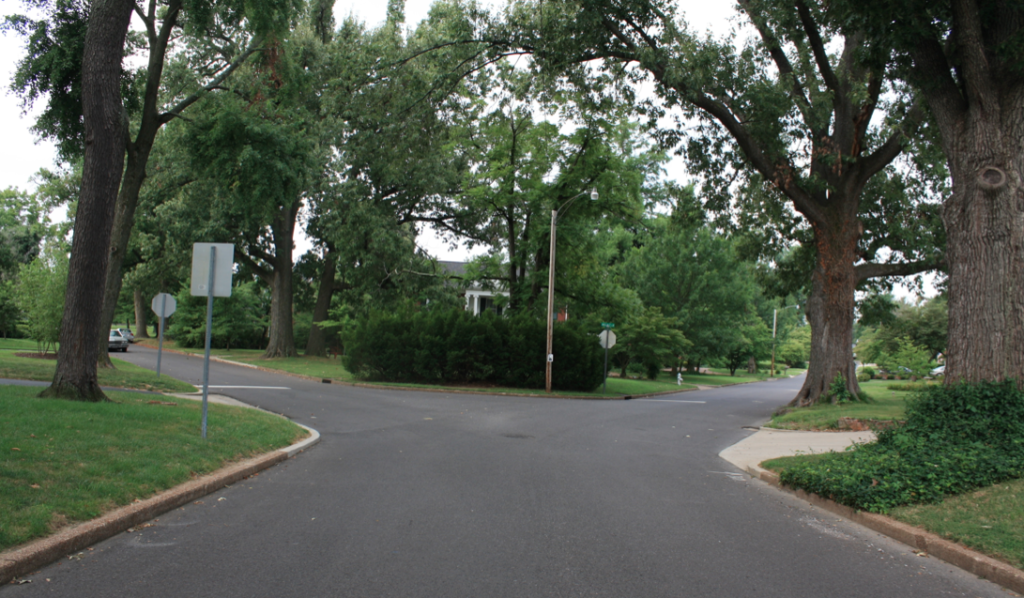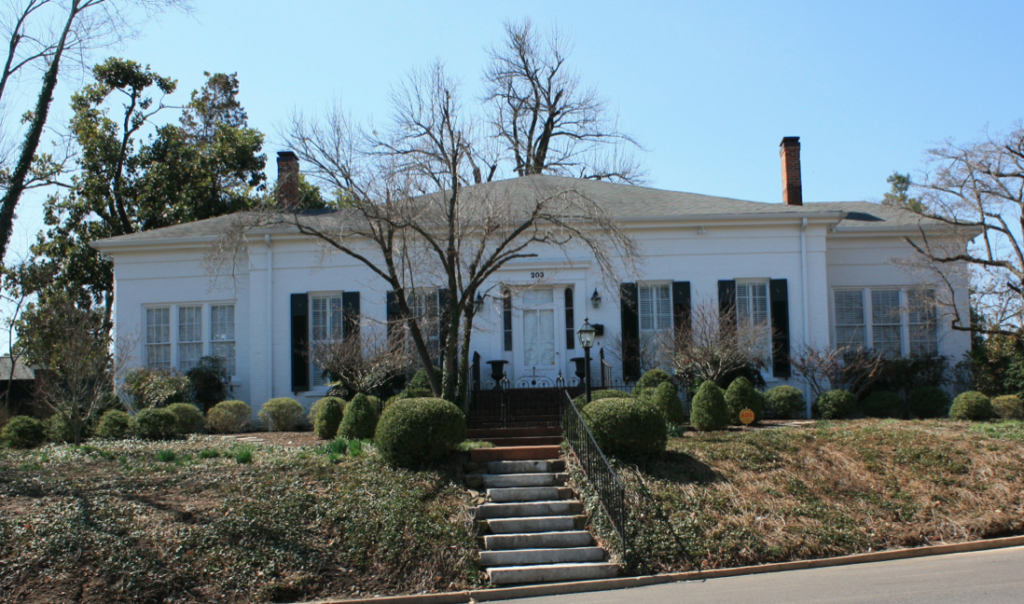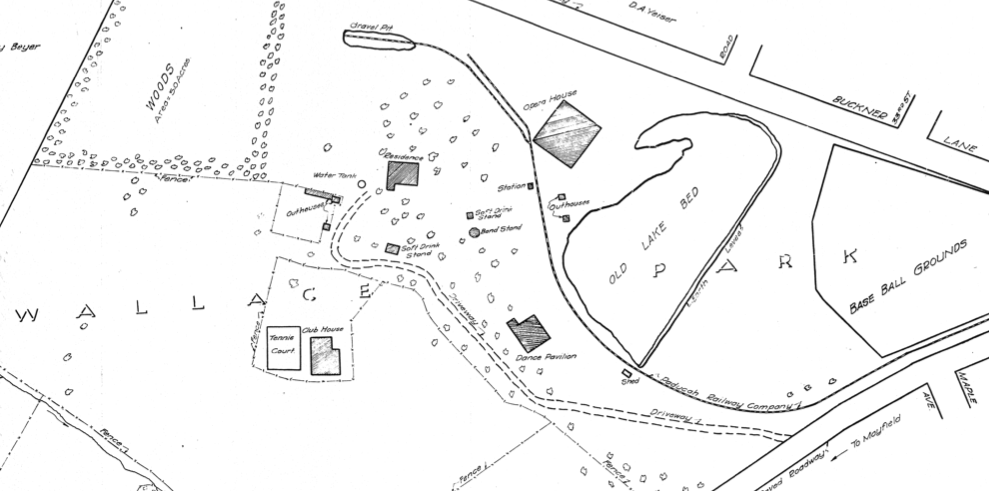 |
| Tree-lined streets of Wallace Park Neighborhood Historic District Photo: Ky. Heritage Soc., NRHP Application |
The National Park Service listed Paducah’s Wallace Park Neighborhood Historic District on the National Register of Historic Places on February 22, 2012. The district was recommended by the Kentucky Heritage Council in December.
Development of Wallace Park began in 1923 as an affluent residential neighborhood and it thrived as a middle- and upper-class subdivision after incorporation into Paducah’s city limits in 1926. The district consists if approximately 75 acres, including 154 of 159 structures being contributing.
 |
| Wallace House – 203 Cedar Lane – Paducah, Ky. Photo: Ky. Heritage Soc., NRHP Application |
The oldest structure, the Wallace House, was built ca. 1860 by Captain Phillip Wallace and his wife and is “the iconic symbol of Wallace Park.” “The Greek Revival structure is a five- bay, central passage structure laid in seven-course, common-bond masonry and covered by a hip roof. The side and rear of the structure are enclosed with several additions.” In 1890, Capt. Wallace sold his home and the surrounding acreage to the City Transit Company who developed the property into a recreational, family getaway (accessible, of course, by trolley).
Originally known as LaBelle Park, the site included a nine hole golf course, dance pavilion, lake, and a zoo. The park – then about a mile west of Paducah’s city limits – also had a casino!!
Around 1904, baseball diamonds and bleachers were added and the park was renamed Wallace Park. A minor league baseball team (Kitty League) called it home from 1904-1908. Interest in the park, however, fell by the early 1920s.
 |
| Survey of Wallace Park – west of Paducah, Ky. (June 1923) Source: Ky. Heritage Soc., NRHP Application |
Before the neighborhood was developed, the land was offered by the city to the state to be the site for a new college in the Purchase area. Instead, in 1922, the state legislature selected the town of Murray as the home of the new western normal school. At the same time, an eastern normal school at Morehead was also established.
Once a neighborhood was planned, Tudor Revival and Craftsman Bungalow style homes were constructed in the mid-1920s. These were followed by the construction of Cape Codders and Colonial Revivals. In the 1950s, a housing boom prompted the construction of several duplexes. The last homes in the neighborhood were built in the 1980s.
The neighborhood is a microcosm of Paducah’s own development during the twentieth century. Further, the integrity of the neighborhood is strong due to design requirements, setbacks, and minimum housing prices since the earliest days of Wallace Park. It is a beautiful neighborhood with a variety of architectural styles, established trees, and significant character.
Source: McCracken Co. History; NRHP Application, #12000047; NRHP Listing; Paducah Parks History
